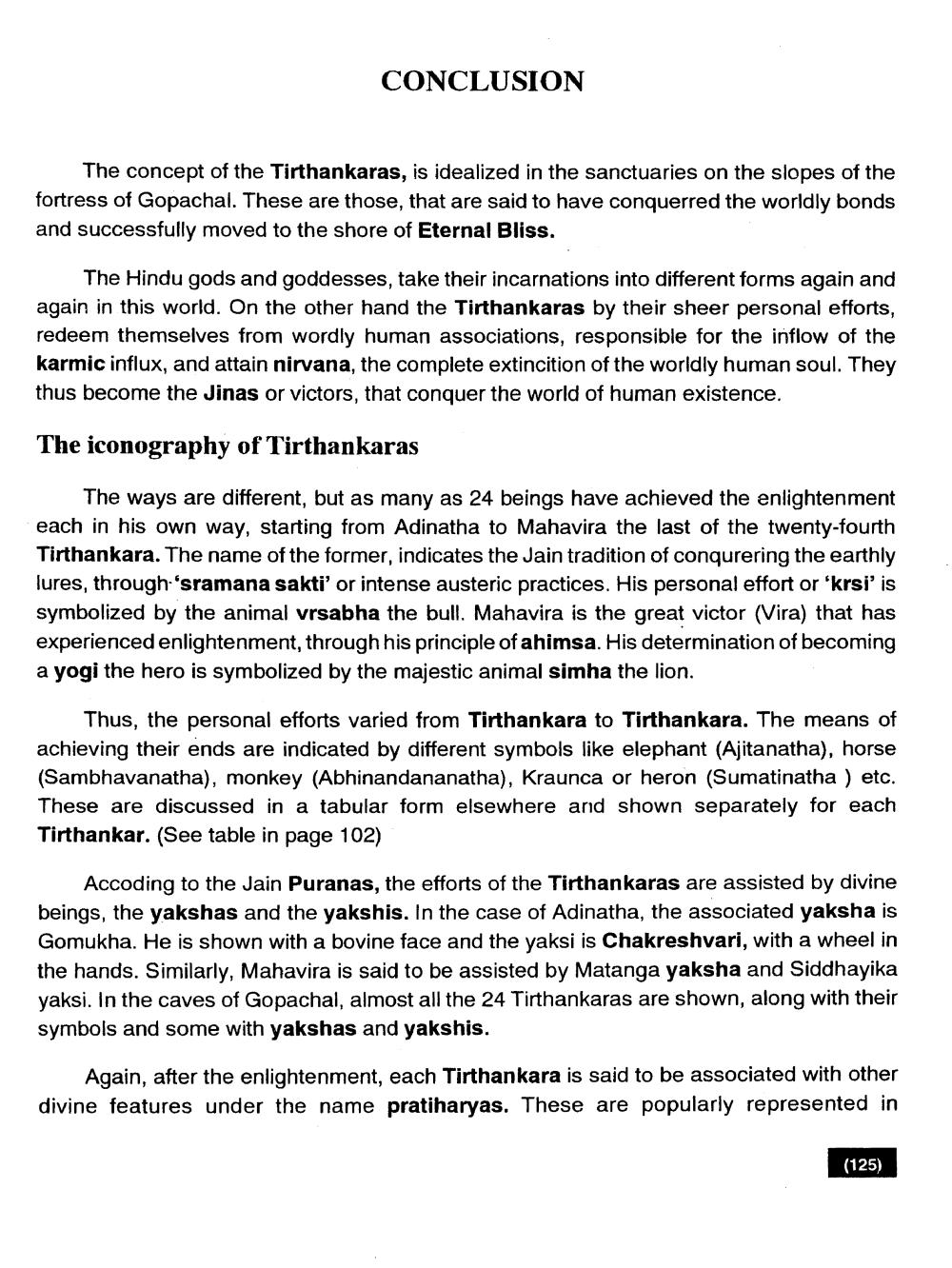________________
CONCLUSION
The concept of the Tirthankaras, is idealized in the sanctuaries on the slopes of the fortress of Gopachal. These are those, that are said to have conquerred the worldly bonds and successfully moved to the shore of Eternal Bliss.
The Hindu gods and goddesses, take their incarnations into different forms again and again in this world. On the other hand the Tirthankaras by their sheer personal efforts, redeem themselves from wordly human associations, responsible for the inflow of the karmic influx, and attain nirvana, the complete extincition of the worldly human soul. They thus become the Jinas or victors, that conquer the world of human existence.
The iconography of Tirthankaras
The ways are different, but as many as 24 beings have achieved the enlightenment each in his own way, starting from Adinatha to Mahavira the last of the twenty-fourth Tirthankara. The name of the former, indicates the Jain tradition of conqurering the earthly lures, through 'sramana sakti' or intense austeric practices. His personal effort or 'krsi' is symbolized by the animal vrsabha the bull. Mahavira is the great victor (Vira) that has experienced enlightenment, through his principle of ahimsa. His determination of becoming a yogi the hero is symbolized by the majestic animal simha the lion.
Thus, the personal efforts varied from Tirthankara to Tirthankara. The means of achieving their ends are indicated by different symbols like elephant (Ajitanatha), horse (Sambhavanatha), monkey (Abhinandananatha), Kraunca or heron (Sumatinatha ) etc. These are discussed in a tabular form elsewhere and shown separately for each Tirthankar. (See table in page 102)
Accoding to the Jain Puranas, the efforts of the Tirthankaras are assisted by divine beings, the yakshas and the yakshis. In the case of Adinatha, the associated yaksha is Gomukha. He is shown with a bovine face and the yaksi is Chakreshvari, with a wheel in the hands. Similarly, Mahavira is said to be assisted by Matanga yaksha and Siddhayika yaksi. In the caves of Gopachal, almost all the 24 Tirthankaras are shown, along with their symbols and some with yakshas and yakshis.
Again, after the enlightenment, each Tirthankara is said to be associated with other divine features under the name pratiharyas. These are popularly represented in
(125)




